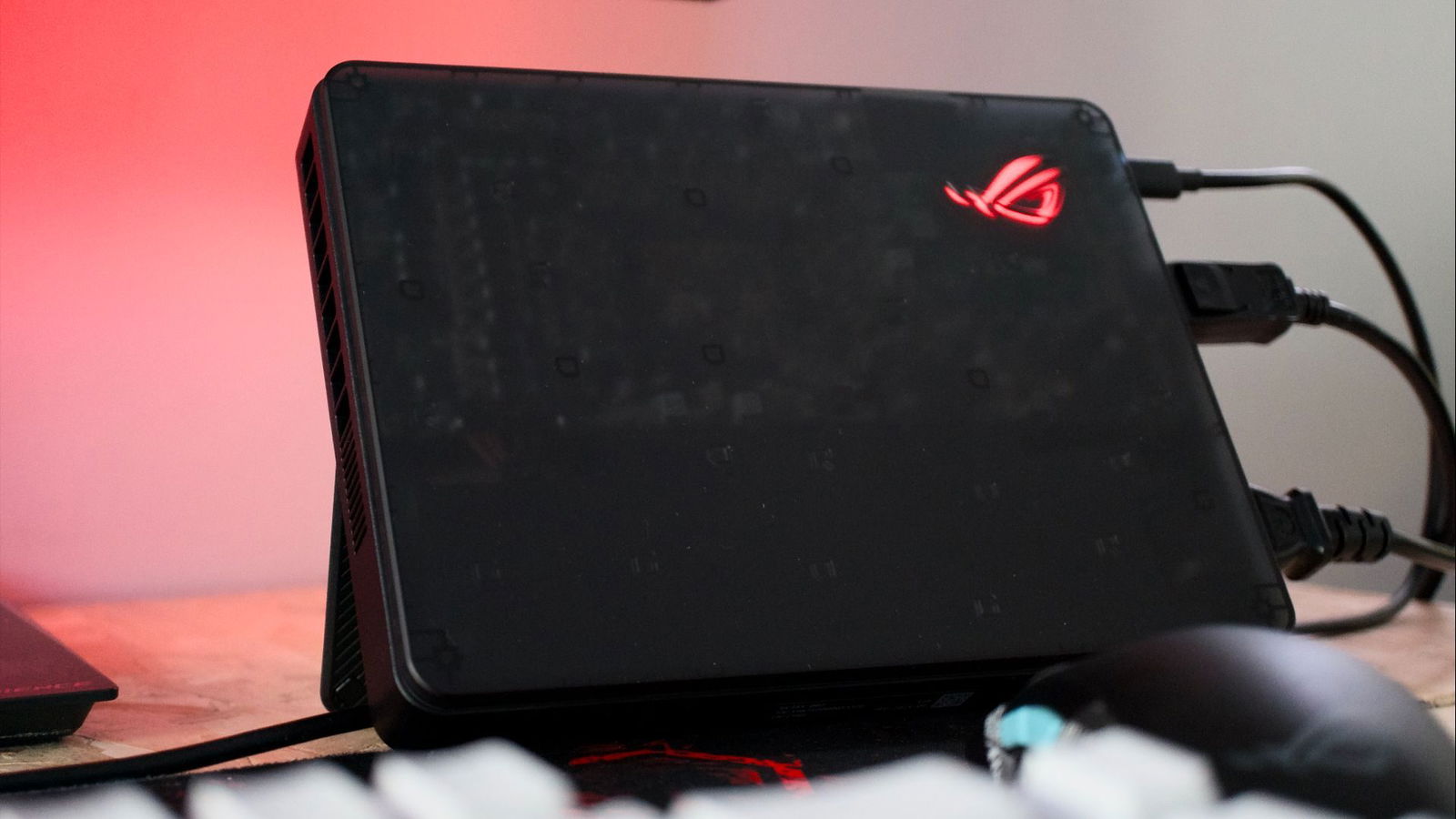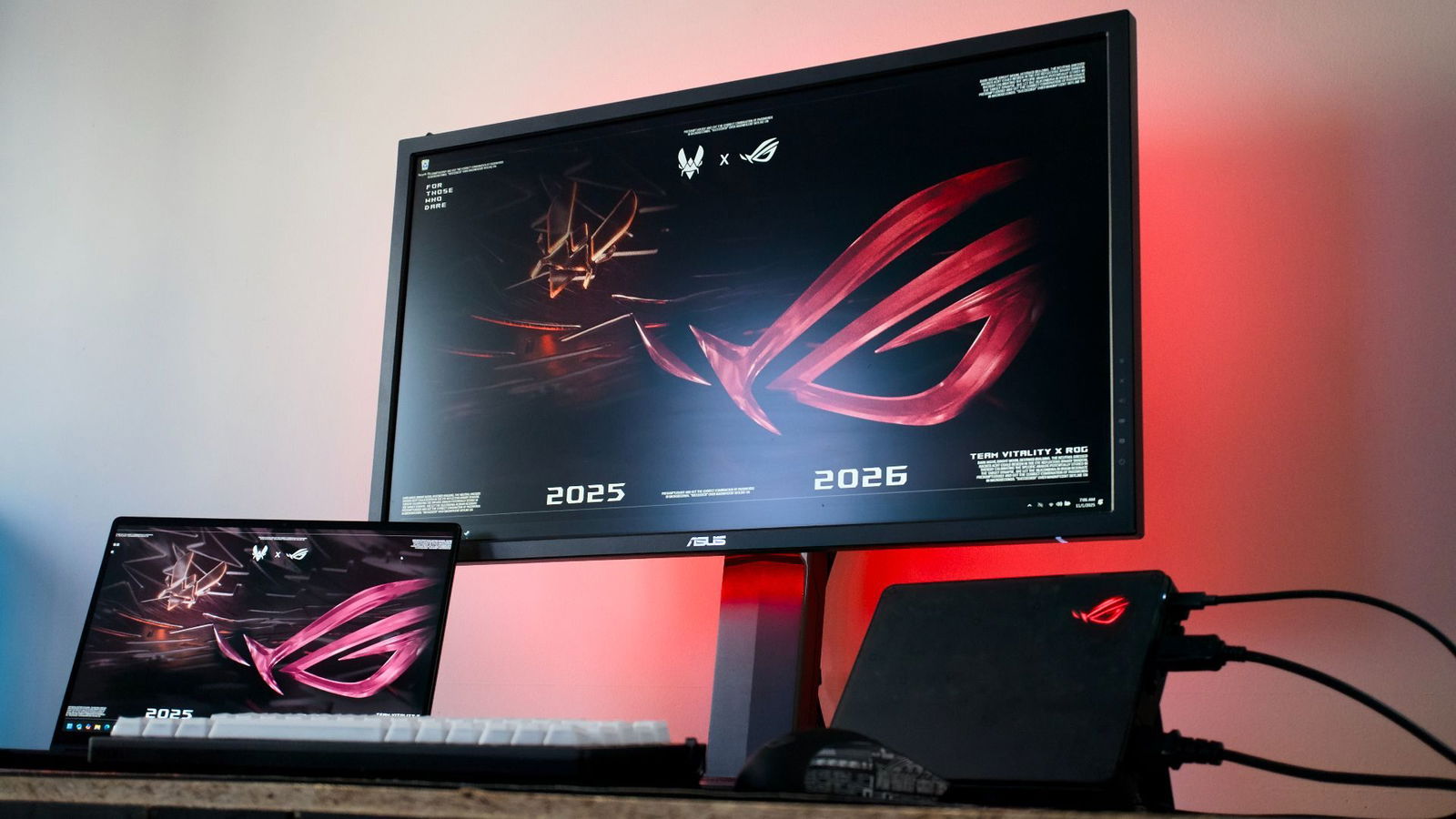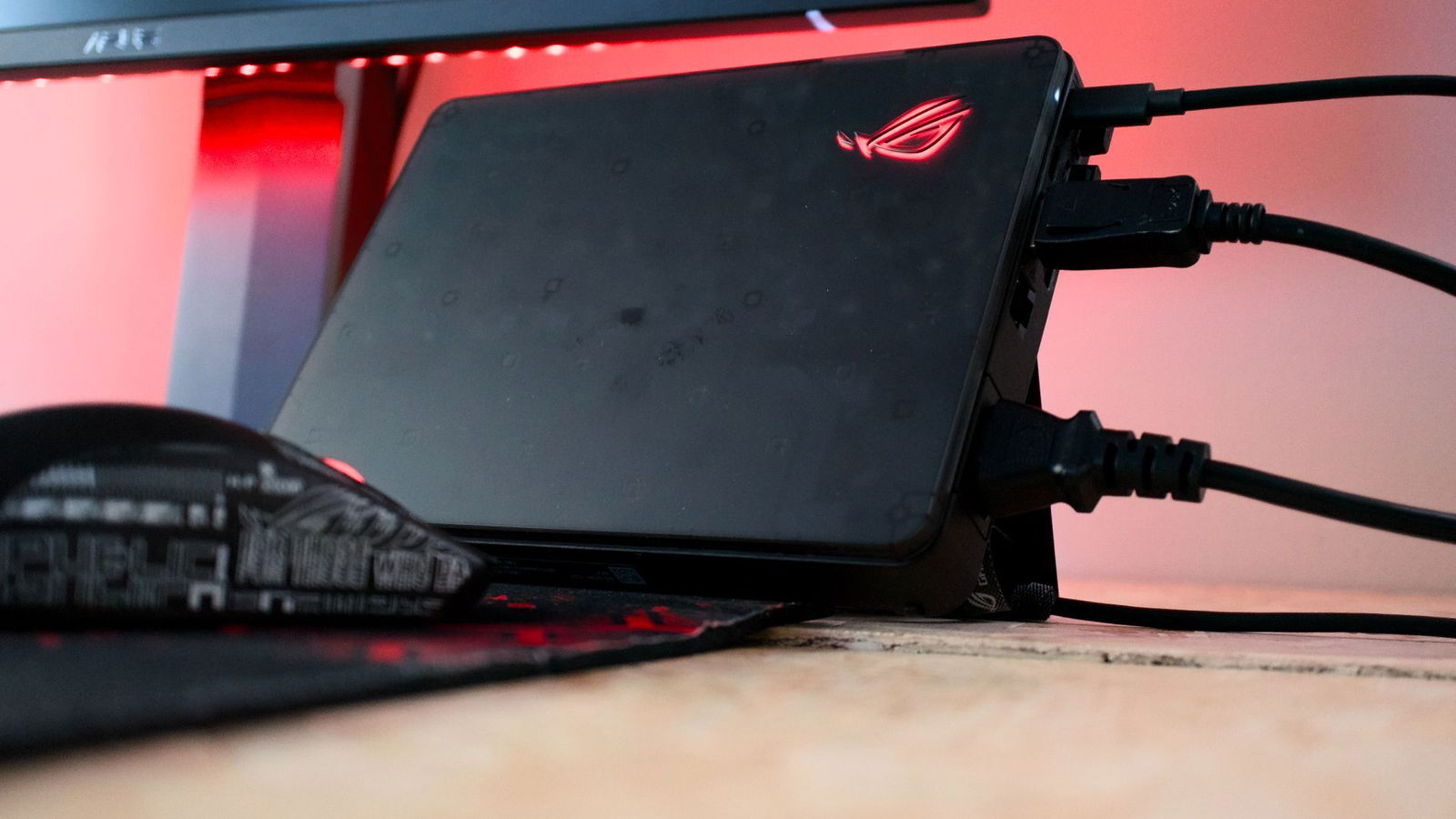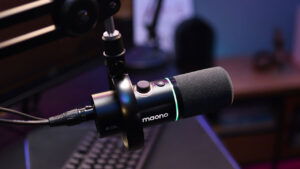The ROG XG Mobile GC34X is an external GPU-driven Thunderbolt 5 Dock designed to supercharge your productivity of your handheld PC into a top-end RTX 5090-powered Gaming PC. Backward compatible with Thunderbolt 4 and USB4 PCs, the XG Mobile is designed to be the gold standard of mobile GPU solutions. With impressive specs, solid IO, and an impressively compact design, there is a lot to like about ROG’s latest External GPU Dock.
While there are two models available, the GC34X (Geforce RTX 5090) and GC34R (Geforce RTX 5070 Ti), the former was sent over for review. Design and construction are identical on both models, with it measuring 8.19 x 6.10 x 1.17 inches and weighing 2.1lbs. Considering it houses some of the most powerful laptop-grade GPUs on the market, it’s an impressively compact form factor.

Cooling is well thought through on the XG Mobile with a dedicated copper vapour chamber and compact heat sync that help provide an impressive thermal cooling system for the RTX 5090. Venting along the left side, top and rear panel helps pull and push air throughout the system and even when under load is quieter than most modern gaming laptops. A plastic kickstand runs the length of the backplane, allowing for secure, angled positioning on your desk.
There is a fairly solid list of IO for the XG Mobile as well. With Thunderbolt 5 support (Thunderbolt 4 backwards compatible), the XG Mobile manage an impressive array of peripherals and monitors. Along with the one Thunderbolt 5 / DisplayPort 2.1 port, IO includes two USB 3.2 Gen 2 type-A, one SD card Reader, one HDMI 2.1, one DisplayPort 2.1, one 5Gb Ethernet and one power connector. All located on the right side of the unit, cable management is centralized, clean and easily tucked away if needed.
“Cooling is well thought through on the XG Mobile with a dedicated copper vapour chamber and compact heat sync that help provide an impressive thermal cooling system for the RTX 5090.”
Finally, a single RGB-enabled ROG logo is located on the front of the unit because it’s not ROG until it’s glowing. Joking aside, it’s a smart and functional design. I’m most impressed with how little room it takes up on the desk, especially considering the included hardware. Of the E-GPU systems I’ve seen, ROGs XG Mobile is the most compact.
Setting up the system requires a couple of key things: a compatible ROG device and Armoury Crate installed on said device. For testing, ASUS sent along the ProArt PX13 that I had the opportunity to take for a test drive last year. Once unboxed, set up with any additional peripherals, including an external monitor (I used an ASUS 4K monitor I had here in the office) and connected to the device, the system will instruct you to download or run updates on Armoury Crate to activate the XG Mobile.

While this is a bit of time sync, once installed and the system is rebooted, everything is immediately recognized, with your second monitor beautifully displaying your laptop’s display. A couple of quick settings I’d recommend for those new to mobile GPU docks. For starters, extend the display. Otherwise, your resolution on the second monitor will adjust to accommodate the laptop. Set your second display to be the primary; it will save you some hassle when running games.
Once up and running, games automatically recognize the primary GPU to be the RTX 5090. Testing the XG Mobile was a treat. While the ProArt’s RTX 4050 is great for content editing, it’s no gaming GPU, but when connected to the XG Mobile, it is a powerhouse for gaming. The dock produced impressive results with Cyberpunk 2077’s benchmark. I could easily hold above 60FPS on ultra settings at 4K. RayTracing tests still produce a solid 47FPS, and with Raytracing and DLSS Frame Generation enabled, I got a whopping 145FPS average.
“The ROG XG Mobile is an incredibly powerful piece of technology that can transform less powerful laptops and handhelds into full on top of the line gaming setups.”
DOOM: The Dark Ages produced similar results, with ultra settings holding a solid 60FPS. Frame Generation consistently held at over 160FPS. Hogwarts Legacy had no issue holding 60FPS at Ultra settings. I did experience a few frame drops during testing with this title, but I believe that had to do with the fact that I was testing a USB4 device, which cannot maximize the transfer speeds of Thunderbolt 5. Adjusting the resolution down to 1440p resolved the issue.
There is no debate on whether the XG Mobile is a powerful unit; it’s seriously impressive technology. The question is simply, “Who is this for?”. At the moment, compatibility is limited to ASUS devices. Handhelds like the ROG Ally X are supported, but the latest Legion Go 2 isn’t (I tested, it didn’t work). Even if you are in the ASUS ecosystem, there are currently limitations to the devices listed, which means many users simply cannot leverage the XG Mobile. For those who can, the XG Mobile can turn your decent mobile rig into a powerhouse gaming setup. Is it worth it, though?

That is a very individual question. While I can see some wanting to leverage the XG Mobile, its lack of accessibility, paired with this price point, not to mention you still need to have a monitor, keyboard and mouse on hand, makes it a hard sell for me. That being said, I feel it does still have a place in modern gaming, but for a very specific gamer demographic.
The ROG XG Mobile is an incredibly powerful piece of technology that can transform less powerful laptops and handhelds into full on top of the line gaming setups. The cost of entry, though, is quite high, and specific, and while I love the technology and what it represents, I really only see it being appealing to a very specific set of gamers.






